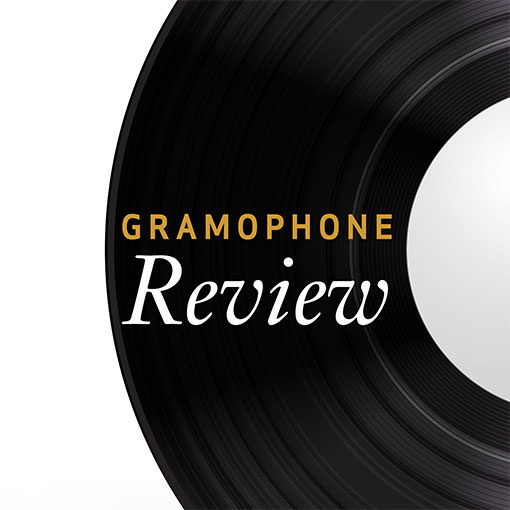20th Century Piano music by Ruggles, Reale, Bloch & Lipkis
View record and artist detailsRecord and Artist Details
Composer or Director: Carl (Sprague) Ruggles, Ernest Bloch, Paul Reale, Larry Lipkis
Label: Music & Arts
Magazine Review Date: 4/1996
Media Format: CD or Download
Media Runtime: 68
Mastering:
DDD
Catalogue Number: CD-757

Tracks:
| Composition | Artist Credit |
|---|---|
| Evocations |
Carl (Sprague) Ruggles, Composer
Carl (Sprague) Ruggles, Composer John Jensen, Piano |
| Sonata for Piano No. 3, 'Sonata Brahmsiana' |
Paul Reale, Composer
John Jensen, Piano Paul Reale, Composer |
| Salon Music |
Paul Reale, Composer
John Jensen, Piano Paul Reale, Composer |
| Scaramouche Variations |
Larry Lipkis, Composer
John Jensen, Piano Larry Lipkis, Composer |
| Sonata for Piano |
Ernest Bloch, Composer
Ernest Bloch, Composer John Jensen, Piano |
Author: Robert Layton
The vast majority of Sibelius’s songs are in Swedish, the language with which he grew up as a child, and here they are given by a distinguished native Swedish partnership. The Seven Songs, Op. 13, are all Runeberg settings and come from the composer’s early years (1891-2). Best known, perhaps, are “Spring is flying” (“Varen flyktar hastigt”) and “The dream” (“Drommen”), but there are others, such as “The young hunter” (“Jagargossen”), that are no less delightful and characterful. The other Runeberg settings here, the Six Songs, Op. 90, come towards the end of Sibelius’s career as a song composer (1917-18). “The north” (“Norden”) is the best known of the group and as in all the nature poetry of Runeberg, it touches a very special vein of inspiration. To my mind – along with “Die stille Nacht” (“The silent city”), Op. 50 No. 5, which is equally affectingly given by these two artists – it is among his finest songs, and it is more sensitively given than the last version I heard from Karita Mattila on Ondine (see above). There is no complete recording of the Opp. 13, 50 and 90 sets currently listed in The Gramophone Classical Catalogue.
Interest naturally focuses on the rarities. The Wood Nymph (“Skogsraet”), not to be confused with the melodrama or the tone-poem, is, to my knowledge, recorded here for the first time. It probably dates from 1889, the year in which Sibelius went to Berlin, and although the Rydberg text is the same as the melodrama, it is otherwise unconnected. As well as A Song (“En visa”), there are two other early Runeberg settings, the 1888 Serenade, and Resemblance (“Likhet”), both of them new to the catalogue. “The Jewish Girl’s Song” (“Den judiska flickans sang”) will be familiar from the incidental music toBelshazzar’s Feast, and is affecting in this form – particularly sung as it is here. The Wood Nymph, Resemblance and A Song remain in the obscurity of manuscript, as indeed does the charming duet, The Thought (“Tanken”), in which von Otter is joined by Monica Groop.
Given the artistry and insight of this splendid partnership, and the interest and beauty of the repertoire, this is a self-recommending issue. My only reservation concerns some of the Op. 13 Songs, where the impression is given to the listener that he is placed on the wrong side of the singer with the piano coming in between. This is less disturbing later in the programme and does not inhibit a strong recommendation.'
Interest naturally focuses on the rarities. The Wood Nymph (“Skogsraet”), not to be confused with the melodrama or the tone-poem, is, to my knowledge, recorded here for the first time. It probably dates from 1889, the year in which Sibelius went to Berlin, and although the Rydberg text is the same as the melodrama, it is otherwise unconnected. As well as A Song (“En visa”), there are two other early Runeberg settings, the 1888 Serenade, and Resemblance (“Likhet”), both of them new to the catalogue. “The Jewish Girl’s Song” (“Den judiska flickans sang”) will be familiar from the incidental music to
Given the artistry and insight of this splendid partnership, and the interest and beauty of the repertoire, this is a self-recommending issue. My only reservation concerns some of the Op. 13 Songs, where the impression is given to the listener that he is placed on the wrong side of the singer with the piano coming in between. This is less disturbing later in the programme and does not inhibit a strong recommendation.'
Discover the world's largest classical music catalogue with Presto Music.

Gramophone Digital Club
- Digital Edition
- Digital Archive
- Reviews Database
- Full website access
From £8.75 / month
Subscribe
Gramophone Full Club
- Print Edition
- Digital Edition
- Digital Archive
- Reviews Database
- Full website access
From £11.00 / month
Subscribe
If you are a library, university or other organisation that would be interested in an institutional subscription to Gramophone please click here for further information.





